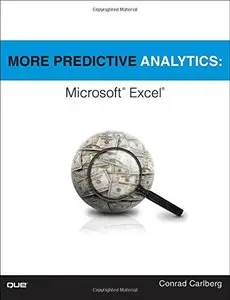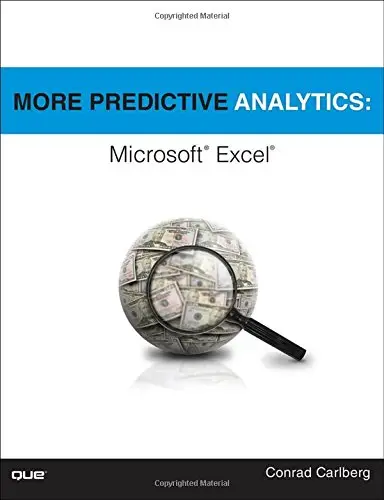More Predictive Analytics: Microsoft Excel by Conrad Carlberg
English | 26 Aug. 2015 | ISBN: 0789756145 | 272 Pages | EPUB/MOBI (True) | 40.73 MB
English | 26 Aug. 2015 | ISBN: 0789756145 | 272 Pages | EPUB/MOBI (True) | 40.73 MB
Accurate, practical Excel predictive analysis: powerful smoothing techniques for serious data crunchers! In More Predictive Analytics, Microsoft Excel® MVP Conrad Carlberg shows how to use intuitive smoothing techniques to make remarkably accurate predictions. You won’t have to write a line of code–all you need is Excel and this all-new, crystal-clear tutorial.
Carlberg goes beyond his highly-praised Predictive Analytics, introducing proven methods for creating more specific, actionable forecasts. You’ll learn how to predict what customers will spend on a given product next year… project how many patients your hospital will admit next quarter… tease out the effects of seasonality (or patterns that recur over a day, year, or any other period)… distinguish real trends from mere “noise.”
Drawing on more than 20 years of experience, Carlberg helps you master powerful techniques such as autocorrelation, differencing, Holt-Winters, backcasting, polynomial regression, exponential smoothing, and multiplicative modeling.
Step by step, you’ll learn how to make the most of built-in Excel tools to gain far deeper insights from your data. To help you get better results faster, Carlberg provides downloadable Excel workbooks you can easily adapt for your own projects.
If you’re ready to make better forecasts for better decision-making, you’re ready for More Predictive Analytics.
Discover when and how to use smoothing instead of regression
Test your data for trends and seasonality
Compare sets of observations with the autocorrelation function
Analyze trended time series with Excel’s Solver and Analysis ToolPak
Use Holt's linear exponential smoothing to forecast the next level and trend, and extend forecasts further into the future
Initialize your forecasts with a solid baseline
Improve your initial forecasts with backcasting and optimization
Fully reflect simple or complex seasonal patterns in your forecasts
Account for sudden, unexpected changes in trends, from fads to new viral infections
Use range names to control complex forecasting models more easily
Compare additive and multiplicative models, and use the right model for each task
Conrad Carlberg is a nationally recognized expert on quantitative analysis, data analysis, and management with applications such as Excel, SAS, and Oracle. He holds a Ph.D. in statistics from the University of Colorado, and is a many-time recipient of Microsoft's Excel MVP designation. Since 1995, he has consulted for companies seeking to guide their business decisions by means of analytics. He has written 11 books about quantitative analysis with Excel, including Predictive Analytics: Microsoft® Excel and Statistical Analysis: Microsoft® Excel.



